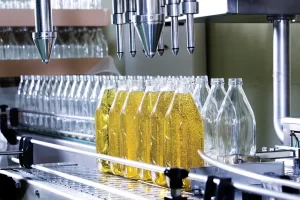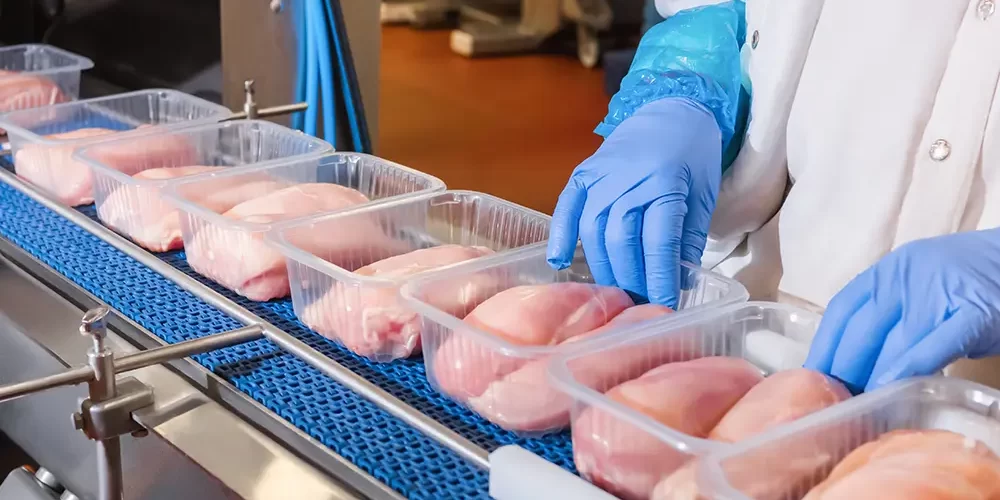As consumers become increasingly aware of the importance of food safety, food processing manufacturers are constantly seeking innovative solutions to meet these expectations.
Chlorine Dioxide (ClO2), is a potent biocide that is revolutionising the way we approach sanitation in food processing.
Chlorine Dioxide has emerged as a powerful alternative to traditional sanitisers due to its unique properties. Unlike chlorine, which can react with organic matter to form potentially harmful by-products, ClO2 is a selective oxidant. It effectively destroys a wide array of pathogens, including bacteria, viruses, and fungi, without leaving behind residue that could compromise the food’s safety or flavour profile.
Chlorine Dioxide in Food Processing: An Overview
 One of the most compelling advantages of Chlorine Dioxide is its efficacy at low concentrations. It works efficiently across a broad pH range, ensuring that pathogens can be eliminated without the need for high doses of chemicals. This is particularly beneficial in food processing environments where maintaining the integrity of the product is paramount.
One of the most compelling advantages of Chlorine Dioxide is its efficacy at low concentrations. It works efficiently across a broad pH range, ensuring that pathogens can be eliminated without the need for high doses of chemicals. This is particularly beneficial in food processing environments where maintaining the integrity of the product is paramount.
The application of ClO2 in food processing is versatile. It can be used for the disinfection of surfaces, equipment, and even the food products themselves. For instance, rinsing fruits and vegetables with a Chlorine Dioxide solution can significantly reduce the presence of E. coli, Salmonella, and other harmful microorganisms. This is crucial for preventing foodborne illnesses, which are a major concern for public health and the food industry.
Enhancing Food Safety with Chlorine Dioxide Technology
Chlorine Dioxide also plays a vital role in water treatment within the food processing sector. Water used in various stages of production can harbour pathogens and contaminants. Treating this water with ClO2 ensures that it meets the high standards required for food safety, thus protecting both the consumer and the integrity of the food processing chain.
Another area where Chlorine Dioxide stands out is in its ability to combat biofilm formation. Biofilms are complex communities of microorganisms that adhere to surfaces and are extremely resistant to conventional cleaning methods. Chlorine Dioxide penetrates biofilms and destroys the bacteria within, which is essential for maintaining a hygienic processing environment.
Sustainable Practices: Chlorine Dioxide’s Environmental Benefits
 The use of ClO2 is not only beneficial from a hygiene perspective but also from an environmental standpoint. It decomposes into harmless by-products, namely chloride and oxygen, which means it doesn’t contribute to environmental pollution. This aligns with the growing trend of eco-friendly practices within the food industry.
The use of ClO2 is not only beneficial from a hygiene perspective but also from an environmental standpoint. It decomposes into harmless by-products, namely chloride and oxygen, which means it doesn’t contribute to environmental pollution. This aligns with the growing trend of eco-friendly practices within the food industry.
Future Trends: Chlorine Dioxide as a Food Processing Innovator
In conclusion, the integration of Chlorine Dioxide into food processing protocols offers a multitude of benefits. Its effectiveness at low concentrations, lack of harmful residues, and environmental safety make it an attractive choice for food manufacturers. As the industry continues to innovate and prioritise consumer health, ClO2 stands as a testament to the progress being made. It’s not just about keeping food safe; it’s about moving towards more sustainable, efficient, and consumer-friendly practices. To learn more about how Scotmas can assist in implementing Chlorine Dioxide solutions in your food processing operations, please don’t hesitate to contact us.






